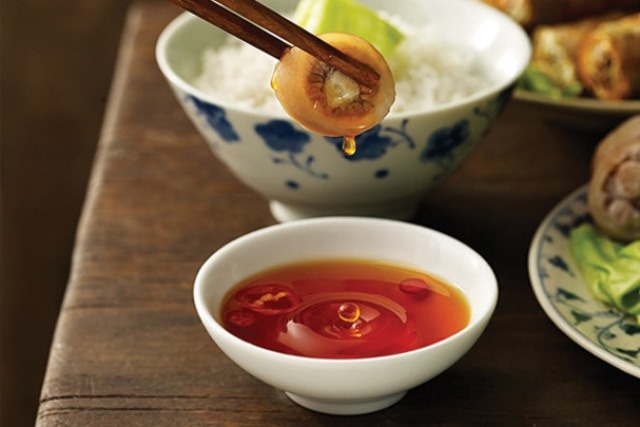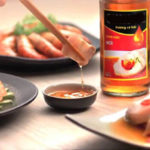Use cooled rice
Drop some cooled rice into the bowl of fish sauce. If the rice sinks, it indicates that the fish sauce is of low quality. On the other hand, if the rice floats on the surface of the sauce, without any chemicals, it shows that the fish sauce is good.
Color
High-quality fish sauce has a golden or reddish color. However, over time, the color of traditional fish sauce will darken, which is a natural sign of traditional fish sauce.

Protein content
According to the Vietnamese standards for fish sauce (TCVN 5107:2003), there are 4 types: Special type with a protein content greater than 30No, premium type with a protein content greater than 25No, grade 1 type with a protein content greater than 15No, and grade 2 with a protein content greater than 10No. The natural protein content of pure traditional fish sauce ranges from 30 to 40 degrees, and sometimes reaches 43-45 degrees (but very rare).
Taste and aroma
Good fish sauce usually has a light, salty-sweet, harmonious, and savory aroma. If you taste it and feel an unpleasant salty and bitter taste on your tongue, there are 2 possibilities: it’s either high in protein or contains additives that are not guaranteed.
Some other notes:
In addition to the above methods, housewives can differentiate between real and fake fish sauce using the following methods:
– Shine the fish sauce under light, then tilt the fish sauce bottle upside down. If sediments appear, it should not be purchased.
– Natural high-protein fish sauce usually has a dark reddish-brown color, ensuring a thick consistency and a rich flavor.
– Avoid buying fish sauce without clear origin, excessively cheap price, or floating on the market, as it may contain many health hazards.
According to Khoevadep
Making an Impact on the Taste: Comparison of Stir-Frying Ramen Noodles with or without Seasoning Packet Added First
 Taste: Comparison of Stir-Frying Ramen Noodles with or without Seasoning Packet Added First’>
Taste: Comparison of Stir-Frying Ramen Noodles with or without Seasoning Packet Added First’>From school cafeterias to office lunchrooms, shrimp noodle dishes are a familiar sight for many of us – especially students and busy professionals.
High Demand for ‘Super Giant’ Chili Pepper Despite Expensive Cost
The talk of the town is a new breed of “giant super chili” pepper that has been making an appearance. It’s powerful heat and hefty price tag is creating an excitement as people line up in anticipation of tasting this fiery vegetable. Want to know more about this mysterious discovery? Read on to find out more!


































